How we will TREAT homer Simpson's mental state using deep brain stimulation
As any diehard Simpsons fan knows, Homer Simpson has had moments of stress, anxiety, and depression. Obviously**, what he really needs is Deep Brain Stimulation using Transcranial Focused Ultrasound, which will excite strategically-chosen areas of his brain and improve his condition... if we hit the right spot.
**The detailed diagnosis and treatment plan is left as an exercise to the reader

Most people are familiar with Ultrasound in the context of pregnancy - using sound waves to create images of a fetus in-utero.
Transcranial focused ultrasound is another application of the same technology; it's an emerging, non-invasive method of brain therapy. Well calibrated sounds waves can strategically modulate (‘excite’) a tiny target area in the brain, which has therapeutic potential in various neurological diseases.
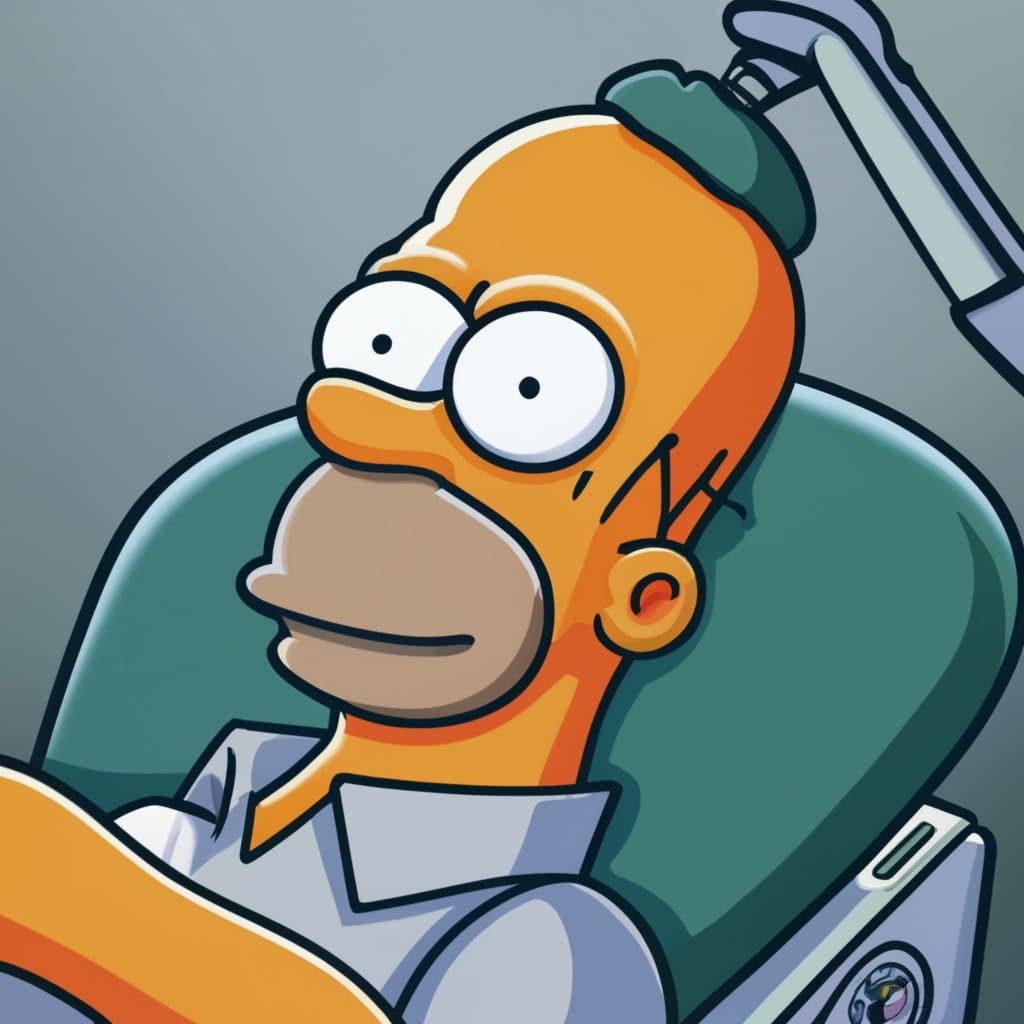
Whoah! Don't turn on the machine yet. You can't just starting blasting sound waves into a human brain without some preparation. Sound waves can get deflected or altered, and can create high pressure areas in unexpected places if you aren't careful.
We need to start by imaging his head, which will show us the structure of Homer's brain, the density of his bone and brain matter, which has an impact on how the sound waves travel through his head. From there, we can identify the brain region that would be most therapeutic to target, and design a full setup that will maximize the chances of an effective treatment with minimal side effects.
Lucky for us, there's no need to call Homer in for an appointment. The internet has given us this beautiful image:
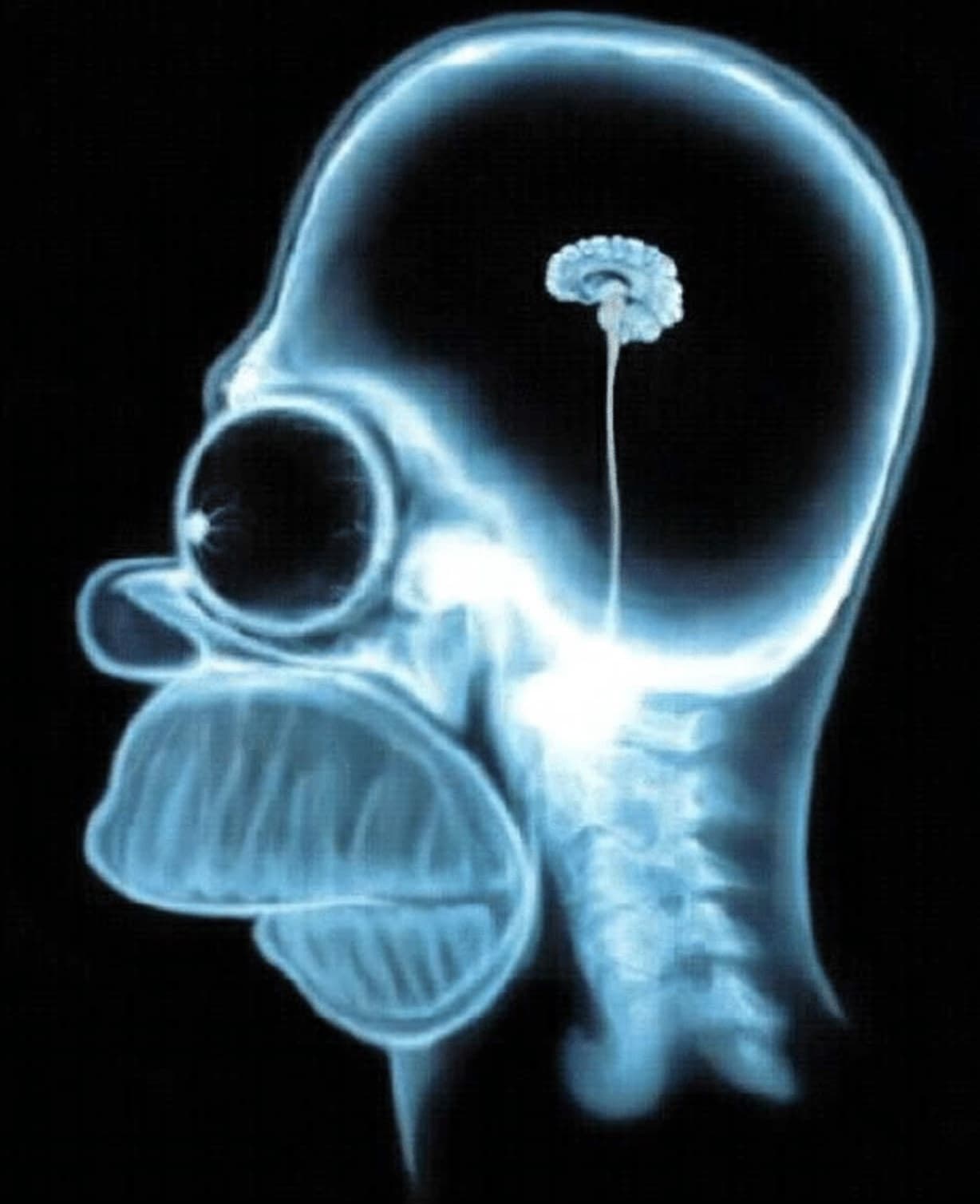
Ok, there's not too much brain matter to work with there, but also, that brain stem is really tiny. We need to be extra careful not to focus ultrasound waves on that stem, which may risk unnecessary damage.
Using NeuroTechDevkit to prepare for transcranial ultrasound
The Neurotech Development Kit (NDK) is an open-source, community-driven software library that enables software developers without access to hardware and human subjects to simulate transcranial focused ultrasound stimulation scenarios.
For brevity, there is no code on this page. However, a notebook with this full analysis has been added to the documentation here.
First, we need to take Homer's CT scan and divide it into materials. This is important, because sound waves travel differently through various materials (ex: brain matter vs. bone). If we want to simulate the ultrasound treatment accurately, we need a precise representation of soundwave physics.
A brain of this size is unprecedented, as far as I know. In this analysis we will assume that the remaining space within the skull is filled with water, or some other fluid that has similar physical properties. If you have more information on the contents of Homer's skull, please reach out to me directly and I will update this page with the appropriate material physics.
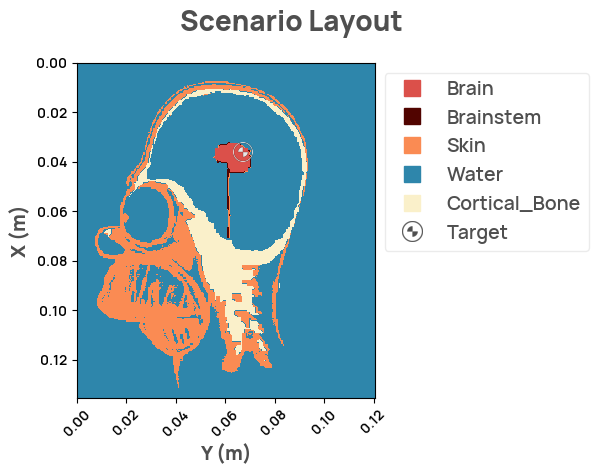
Note that, in addition to modeling Homer's skull, skin, brain matter, and brain stem, we've overlayed a target to indicate the brain region we'd like to target with Homer's treatment.
You may also notice that we've modeled water around the outside of homer's face as well. Sound waves would be reflected back and actually break our transducer (sound wave generation machine) if we used it in open-air. Fortunately for Homer, he will not be required to submerge his head underwater for the duration of the treatment (or in Duff beer, as he keeps asking for); Ultrasound techs spread gel over the relevant area which creates a better interface for sound waves to travel. This gel has physical properties that are extremely similar to water, so our simplification is valid.
Arranging Ultrasound Sources effectively
The placement and configuration of the source transducer is critical. The orientation and position of the source determine what area of the brain gets modulated the most. The source aperture, focal length, and frequency are other factors that can be levered to affect how the brain is affected.
Let simulate a full scenario now, but placing a source behind Homer's head and angling it up towards our target:
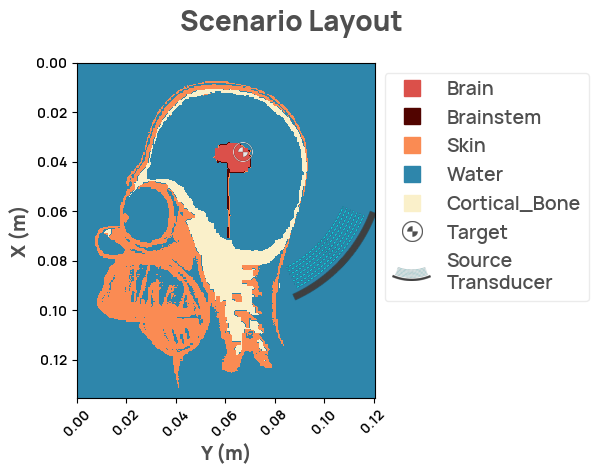
Looks good! Let's see how this behaves by using the NDK's capabilities. The diagram below provides a visual representation of our ultrasound simulation. It uses color coding to show how pressure, driven by the wave amplitude, varies across different areas. This helps us understand how ultrasound waves spread and affect tissues. The NDK supports full customization of material physics, and also includes default material properties for common materials such as skin or cortical bone.
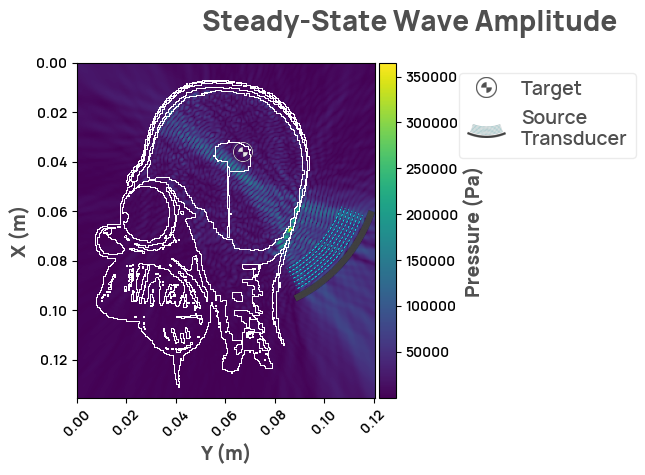
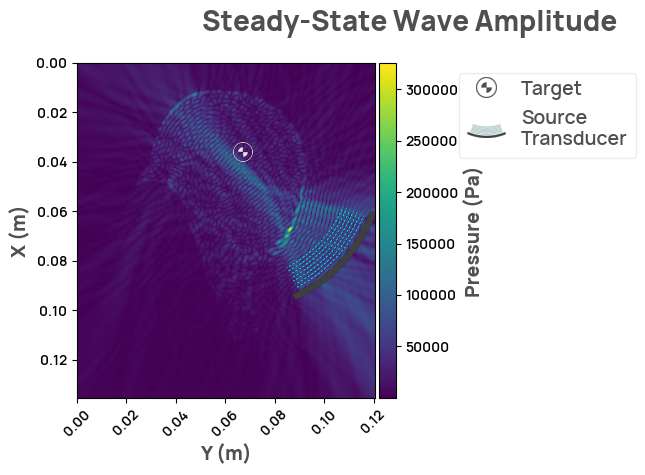
You'll notice that the skull reflects the waves, rendering much of their power useless. This is the challenge with non-invasive methods (in contrast with invasive methods that would require surgery). Unfortunately, open brain surgery (and the subsequent recovery time) isn't an option for Homer in his current job as a... as... uh .. well look, it's just not an option in his current job.
You'll also notice that within the skull, the high pressure areas mostly missed the target. In fact, it's very close to hitting his tiny brain stem, which is not great. Good thing we checked the simulation first!
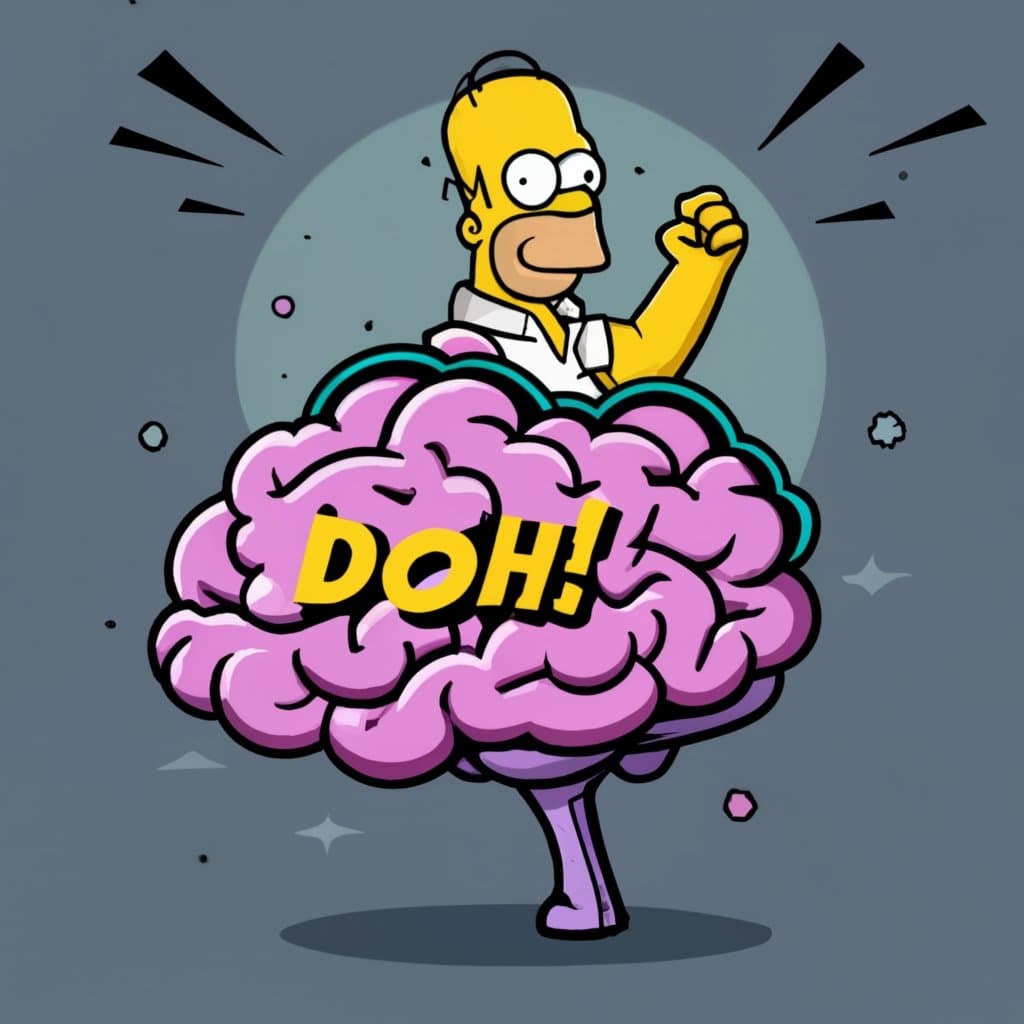
Let's try again. We'll move the source up higher, which also allows us to make the source a bit wider (increase the aperture).
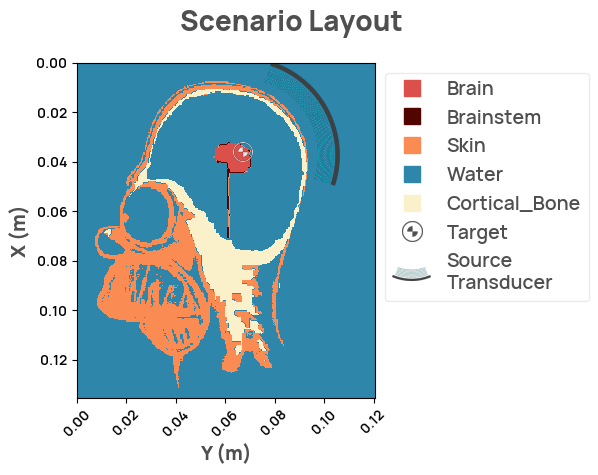
With some additional tweaking, we are able to hit the target very accurately:
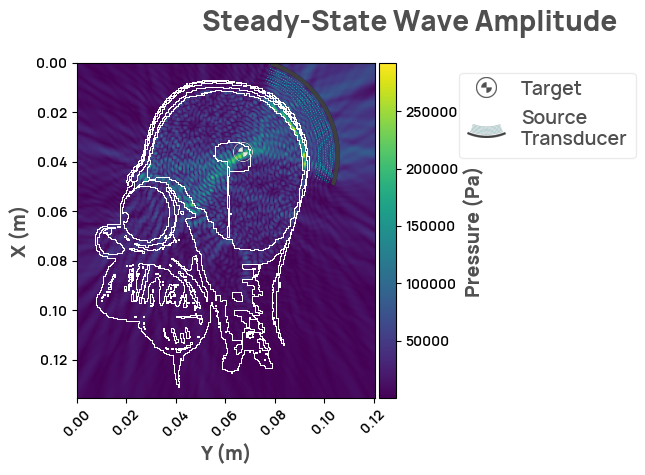

Therapy can begin!
